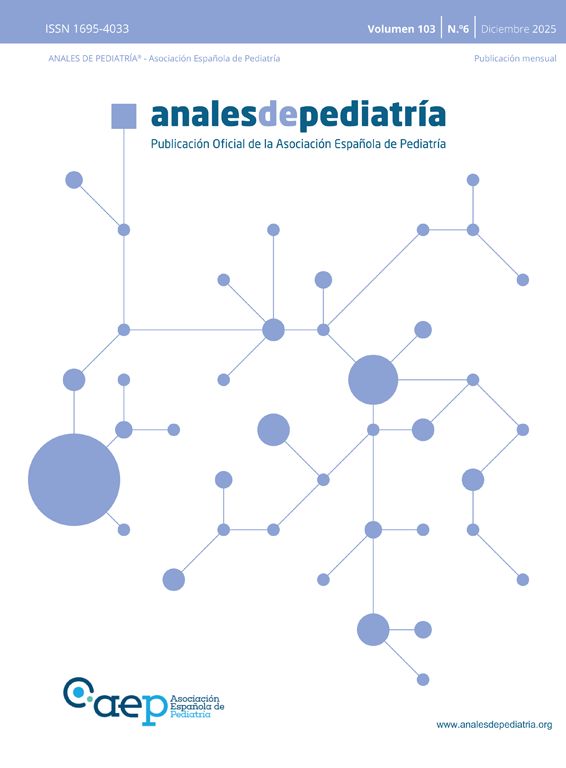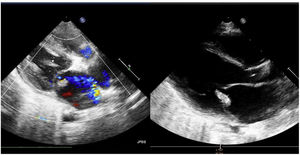Focused cardiac ultrasound (FoCUS) is the term used to refer to point-of-care ultrasound (PoCUS) applied to the evaluation of the haemodynamically unstable patient. Its growing application in paediatric care can allow early diagnosis.1
We present the case of an infant aged 13 months with fever without a source, a previous history of hand, foot and mouth disease (HFMD) and bacteraemia (Kingella kingae). On day 4, after targeted antibiotherapy, the fever, tachycardia, tachypnoea and systolic murmur persisted, prompting performance of FoCUS in the paediatric ward, the chief findings of which were a vegetation (Appendix B, video 1) and mitral valve insufficiency, confirmed by the on-call cardiologist (Figs. 1–3). The patient was transferred to a hospital that had a paediatric intensive care unit (PICU) where he remained respiratory stable (nasal prongs) and, due to the clinical and sonographic signs of heart failure, received haemodynamic support (milrinone and diuretics). The blood test results were unremarkable, with the most salient being the level of pro B-type natriuretic peptide (proBNP, 5039 pg/mL). The patient required mitral valve repair and placement of a mechanical prosthetic valve in a second surgical intervention on account of progressing haemodynamic instability.
Endocarditis caused by HACEK group bacteria is infrequent and associated with a high incidence of complications, and early diagnosis and treatment are crucial. In children, K kingae is part of the normal oropharyngeal microbiota and it rarely causes invasive infection.2 The previous episode of HFMD may have facilitated its passage into the bloodstream.
Although the most recent PoCUS guidelines3 have found that the evidence on its used for diagnosis of endocarditis is contradictory and of poor quality, it can detect intracardiac masses, allowing referral of the patient to a paediatric or intensive care cardiologist with advanced skills in the technique.
The use of point-of-care FoCUS allowed early optimization of the diagnostic and therapeutic approach.









